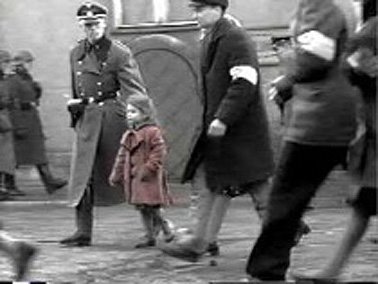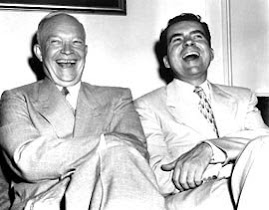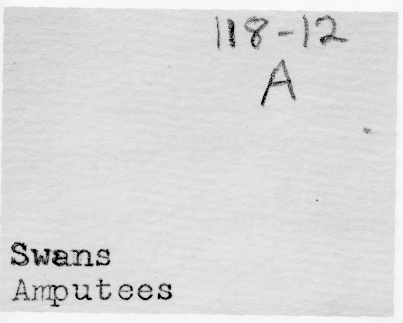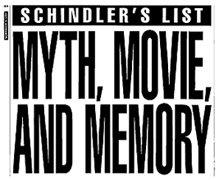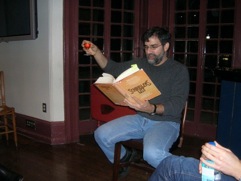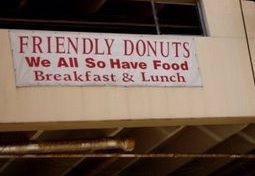 From left to right, Aldon Nielsen, Michelle Taransky, Charles Bernstein in my office recently for the recording of the 26th episode of PoemTalk. This is one is about Vachel Lindsay's "The Congo." Go to the PoemTalk page for much more and a link to the podcast audio.
From left to right, Aldon Nielsen, Michelle Taransky, Charles Bernstein in my office recently for the recording of the 26th episode of PoemTalk. This is one is about Vachel Lindsay's "The Congo." Go to the PoemTalk page for much more and a link to the podcast audio.
Monday, November 30, 2009
Vachel Lindsay podcast
 From left to right, Aldon Nielsen, Michelle Taransky, Charles Bernstein in my office recently for the recording of the 26th episode of PoemTalk. This is one is about Vachel Lindsay's "The Congo." Go to the PoemTalk page for much more and a link to the podcast audio.
From left to right, Aldon Nielsen, Michelle Taransky, Charles Bernstein in my office recently for the recording of the 26th episode of PoemTalk. This is one is about Vachel Lindsay's "The Congo." Go to the PoemTalk page for much more and a link to the podcast audio.
Labels:
Charles Bernstein,
PENNsound,
PoemTalk
Sunday, November 29, 2009
pioneer ID cards = poems
 Poems Found in A Pioneer Museum, Susan Howe, 2009: 32 letterpress cards printed on Canaletto Liscio paper, in binders box 130 x 100. 300 copies. Susan Howe writes: "I copied these poems, almost verbatim, from typed identification cards placed beside items in display cases at Salt Lake City’s Pioneer Memorial Museum founded in 1901 by the Daughters of Utah Pioneers. The artifacts and memorabilia in their collection date from 1847 when Mormon settlers first entered the Valley of the Great Salt Lake until the joining of the railroads at Promontory Point, Utah in 1869." More...
Poems Found in A Pioneer Museum, Susan Howe, 2009: 32 letterpress cards printed on Canaletto Liscio paper, in binders box 130 x 100. 300 copies. Susan Howe writes: "I copied these poems, almost verbatim, from typed identification cards placed beside items in display cases at Salt Lake City’s Pioneer Memorial Museum founded in 1901 by the Daughters of Utah Pioneers. The artifacts and memorabilia in their collection date from 1847 when Mormon settlers first entered the Valley of the Great Salt Lake until the joining of the railroads at Promontory Point, Utah in 1869." More...
Labels:
ephemeral art,
Susan Howe
schticky Poetry?
 Robin Williams reads Poetry magazine. Was he getting any good material from its pages? [Photo by Lawrence Schwartzwald.]
Robin Williams reads Poetry magazine. Was he getting any good material from its pages? [Photo by Lawrence Schwartzwald.]
Labels:
Lawrence Schwartzwald,
photography
Saturday, November 28, 2009
free performance at KWH on Tuesday
 Ursula Rucker comes to KWH on Tuesday, December 1, at 6:30. Performance is free and open to the public - and that's because it's supported by the Caroline Rothstein Oral Poetry project, which has helped us at KWH produce three previous events. Last year's event featured the amazing Tracie Morris and her band.
Ursula Rucker comes to KWH on Tuesday, December 1, at 6:30. Performance is free and open to the public - and that's because it's supported by the Caroline Rothstein Oral Poetry project, which has helped us at KWH produce three previous events. Last year's event featured the amazing Tracie Morris and her band.
Labels:
Kelly Writers House,
oral poetry
were lost, now found
 The Center for the Humanities invites you to celebrate the publication of The Amiri Baraka/Edward Dorn Correspondence; The Kenneth Koch/Frank O’Hara Letters: Selections; Muriel Rukeyser: Darwin & the Writers; Philip Whalen’s Journals: Selections: Robert Creeley: Contexts of Poetry, with selections from Daphne Marlatt’s Journals. These comprise the inaugural chapbook series in LOST & FOUND, the CUNY Poetics Document Initiative.
The Center for the Humanities invites you to celebrate the publication of The Amiri Baraka/Edward Dorn Correspondence; The Kenneth Koch/Frank O’Hara Letters: Selections; Muriel Rukeyser: Darwin & the Writers; Philip Whalen’s Journals: Selections: Robert Creeley: Contexts of Poetry, with selections from Daphne Marlatt’s Journals. These comprise the inaugural chapbook series in LOST & FOUND, the CUNY Poetics Document Initiative.Tuesday December 8th, 2009
6:30 pm, Martin E. Segal Theatre
The Graduate Center, CUNY
365 Fifth Avenue at 34th Street
New York City
Introduction
Ammiel Alcalay
Readings and Presentations
Stefania Heim, Claudia Moreno Pisano, Josh Schneiderman, Brian Unger,
special guests David Henderson, Bill Berkson, and others
Lost & Found is a publication project emerging from archival and textual scholarship done by students at The Graduate Center, with the primary focus on writers falling under the rubric of the New American Poetry. Since accessibility to archival material proposes alternative, divergent and enriched versions of literary and cultural history, the Lost & Found initiative takes the New American rubric writ large, including the affiliated and unaffiliated, precursors and followers.
Labels:
Creeley,
Frank O'Hara,
Muriel Rukeyser,
poetry
Thursday, November 26, 2009
Wallace Stevens of the New York School
 I've made an mp3 recording of a speech avatar reciting the lecture Wallace Stevens gave at MoMa in 1951, "Relations between Poetry and Painting." Stevens himself spoke in a low droning monotone so the avatar, minus the patrician accent, gets it about right. Stevens made more public visits to New York in 1951 than any other year. He read at the Poetry Center/92nd St Y, at MoMA, gave several short talks at various occasions, etc. Some of his letters read like I-do-this-I-do-that accounts of walking and looking along the avenues.
I've made an mp3 recording of a speech avatar reciting the lecture Wallace Stevens gave at MoMa in 1951, "Relations between Poetry and Painting." Stevens himself spoke in a low droning monotone so the avatar, minus the patrician accent, gets it about right. Stevens made more public visits to New York in 1951 than any other year. He read at the Poetry Center/92nd St Y, at MoMA, gave several short talks at various occasions, etc. Some of his letters read like I-do-this-I-do-that accounts of walking and looking along the avenues.
Labels:
Modern art,
MoMA,
painting,
Wallace Stevens
third most oft-visited blog entry
 My diatribe against Schindler's List (which, I'll admit, risks accusations of elitism) is the third most-often visited entry in this entire blog, and it dates back to March of 2008--a while back--and is thus not all that easily viewable other than through web searches. It's not, by any means, that my criticism is well known or well linked, but rather, probably, that there's a nation full of high-school kids who are made to watch the movie in school and are being asked to write papers about it. I wonder if any of them, upon reading my concerns, absorb that into their analyses. (If you are such a student, please let me know by clicking the little envelope below this entry.)
My diatribe against Schindler's List (which, I'll admit, risks accusations of elitism) is the third most-often visited entry in this entire blog, and it dates back to March of 2008--a while back--and is thus not all that easily viewable other than through web searches. It's not, by any means, that my criticism is well known or well linked, but rather, probably, that there's a nation full of high-school kids who are made to watch the movie in school and are being asked to write papers about it. I wonder if any of them, upon reading my concerns, absorb that into their analyses. (If you are such a student, please let me know by clicking the little envelope below this entry.)
Labels:
blogging,
holocaust,
Oskar Schindler,
Steven Spielberg
Wednesday, November 25, 2009
love, Cid
 From left to right: Cid Corman, Ed Baker, Ted Enslin, Chuck Sandy, at the Lorine Niedecker 100th, November 2003, Milwaukee, Wisconsin. Photo by Ed Baker...well, taken with Ed's camera by John Martone. More photos here. And here are Cid's letters to Ed, the earliest dated 1972.
From left to right: Cid Corman, Ed Baker, Ted Enslin, Chuck Sandy, at the Lorine Niedecker 100th, November 2003, Milwaukee, Wisconsin. Photo by Ed Baker...well, taken with Ed's camera by John Martone. More photos here. And here are Cid's letters to Ed, the earliest dated 1972.
Labels:
Cid Corman,
Lorine Niedecker
Tuesday, November 24, 2009
Monday, November 23, 2009
Roger's angelic writing
Sunday, November 22, 2009
stairs stave
Social good derived from people choosing to take the stairs rather than the escalator? Yes. So, make stair-walking the making of music, and see what happens. (Thanks to Peter Holstein for the tip.)
Labels:
music,
public art
Saturday, November 21, 2009
live chalk writing event

 Tan Lin's Chalk Playground and LitTwitChalk. November 14 brought a live poetry chalking event at PS 2 in New York. Here are photos. Tan writes: "Charles [Bernstein] and Bruce [Andrews] have particularly stunning work, as does Joe Amrheim who chalked an enormous Futurist manifesto."
Tan Lin's Chalk Playground and LitTwitChalk. November 14 brought a live poetry chalking event at PS 2 in New York. Here are photos. Tan writes: "Charles [Bernstein] and Bruce [Andrews] have particularly stunning work, as does Joe Amrheim who chalked an enormous Futurist manifesto."The live chalk writing event is part of the Performa events this year. It's the leading performing arts biennial in the US and about 55 or so NYC poets participated. This event was co sponsored by a number of Asian American organizations including the Museum of the Chinese in America, the Asian American Writers Workshop, and others.
The Performa 09 CAST included: F Alarcon, Bruce Andrews, Charles Alexander, J Amrhein, Susan Bee, Anselm Berrigan, Charles Bernstein, J Blachly, Lea Ann Brown, E/G Bumas, Eleanor Clark, C Churchouse, K Estefan, Rob Fitterman, S Gambito, Kristen Gallagher, P Javier, De-Quan Jenkins, S Jost, A Lin, J Legaspi, A Maier, D Machlin, S Naeem, J Perry, G Picinic, D Rosenfeld, E Sanchez, B Sanders, K Sanders, O/P Shao, J Sigler, Lytle Shaw, Danny Snelson, J Tsuei, D Yarbrough, H Zhang.
Friday, November 20, 2009
giving thanks at PennSound

We at PennSound wish you a happy Thanksgiving by way of a new episode in the PennSound Podcast series. Here we feature excerpts from six poems of giving thanks. Hardly Rockwellian but we think you'll be stirred by this little grateful anthology all the same. I'm especially moved by Robert Creeley's poem here.
This is the 19th in our podcast series. For links to all the others, just go here.
Labels:
PENNsound,
Thanksgiving
American poetry after 1975
 American Poetry after 1975
American Poetry after 1975Duke University Press
a special issue of boundary 2
(Volume 36, Number 3, Fall 2009)
Paperback - $14.00
0-8223-6719-X
[ISBN13 978-0-8223-6719-2]
225 pages
It's entirely on-line via University of Pennsylvania library e-resources under "boundary 2 / Duke University Press Journals":
http://proxy.library.upenn.edu:3262/current.dtl
The Duke University Press page for the book: link.
Contents:
Charles Bernstein / American Poetry After 1975: Editor’s Note / 1
Jim Rosenberg / Bios / The Logosphere / The Finite-Made Evolver Space /3
Peter Gizzi / Eclogues / 9
Christian Bök / Two Dots Over a Vowel / 11
Lytle Shaw / Docents of Discourse: The Logic of Dispersed Sites / 25
Tracie Morris / Rakim’s Performativity / 49
Jennifer Scappettone / Versus Seamlessness: Architectonics of
Pseudocomplicity in
Tan Lin’s Ambient Poetics / 63
Craig Dworkin / Hypermnesia / 77
Jonathan Skinner / Poetry Animal / 97
Herman Rapaport / A Liquid Hand Blossoms / 105
Kenneth Goldsmith / In Barry Bonds I See the Future of Poetry / 121
Joyelle McSweeney / Disabled Texts and the Threat of Hannah Weiner / 123
Brian Reed / Grammar Trouble / 133
Juliana Spahr / The ’90s / 159
Al Filreis / The Stevens Wars / 183
Nada Gordon / Not Ideas about the Bling but the Bling Itself / 203
Marjorie Perloff / “The Rattle of Statistical Traffic”: Citation and
Found Text in Susan
Howe’s The Midnight / 205
Elizabeth Willis / Lyric Dissent / 229
Tan Lin / SOFT INDEX (OF repeating PLACES, PEOPLE, AND WORKS) / 235
Benjamin Friedlander / After Petrarch (In the Rigging) / 241
- - -
The abstract of my essay:
The Stevens Wars
Al Filreis
What reputation and influence has Wallace Stevens had in the years since 1975? The infamous Stevensean disaffection has tended to prohibit definitive legacy, and yet this, in the end, has been productive, forestalling closed arguments among poetics Lefts and Rights, keeping Stevens's work from theoretical alliances until past the point when such would fix its standing in contestations between, for example, theoretical as distinct from historical approaches. To the extent that Stevens can seem anything to anyone, the legacy is of little impact. The many imitations of Stevens's special rhetoric tend to riff on a single poem or idiomatic stance, quick-take attempts at posing in a particular ironic position, one abandoned as quickly as assumed. Among contemporary poets whose own writing contemplates Stevens's overall position, however, a larger pattern does emerge—two Stevenses. First, a meditative Stevens: unagonistic, verbally ruminative, romantic (but called "postromantic"), a repository of human responses, post-Christian yet lyric—a poet whose verse does not make truculent, discordant claims but rather "eke[s] out the mind," forming "the particulars of sounds." Secondly, a languaged Stevens: theoretical, serial, and nonnarrative, metapoetically radical, sometimes satirical (and antinarrative), always obsessive about the state of poetics and insisting on consciousness of the compositional mode as itself a pressure inducing the poem to be composed—a poet whose middle and late seriatic styles befit rather than reject the cyclonic modernist historical modes adopted early and briefly by Eliot, grandly and insistently by Pound, and later by Williams.
Labels:
Charles Bernstein,
Wallace Stevens
flingy unholy alliance
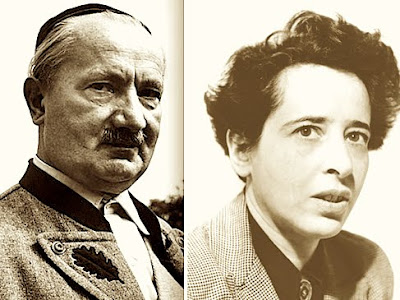 The New York Times lead, for a story published in 1995: "One of the gossipy curiosities of 20th-century philosophy is that Hannah Arendt, the German-born Jewish philosopher remembered for her fierce and unforgiving attacks on totalitarianism, had a youthful fling in the 1920s with Martin Heidegger." Here is a link to that story, and here's a response to the matter by Aharon Meytahl.
The New York Times lead, for a story published in 1995: "One of the gossipy curiosities of 20th-century philosophy is that Hannah Arendt, the German-born Jewish philosopher remembered for her fierce and unforgiving attacks on totalitarianism, had a youthful fling in the 1920s with Martin Heidegger." Here is a link to that story, and here's a response to the matter by Aharon Meytahl.
Wednesday, November 18, 2009
EDIT debut

At last night's inaugural "EDIT" event: Jeremy James Foxtrot Johnson. is an instructor at New York's Center for Book Arts as well as curator for the TEXTFORM reading series. He was born in Los Angeles, CA, and now resides in Queens. Through his own Auto Types Press he prints broadsides and other text-centric ephemera, including collaborative prints with poets Edwin Torres, Joan Retallack, David Lehman and Charles Bernstein, among others.
Labels:
Kelly Writers House
Monday, November 16, 2009
at the Writers House

Post-Thanksgiving and December programs and events at the Writers House: a 1-minute audio announcement.
Labels:
Kelly Writers House
Saturday, November 14, 2009
dialectic at the scholar's paradise
 In my basement I found a water-warped address book dating from the period 1978-1985. This morning I went looking for a few old addresses, picked up the little half-rotted black codex and out fell a pink card, which brought back a flood of good memories. It's a researcher's card given to me on the occasion of my very first visit to an archive of literary manuscripts: the Huntington Library, December 1982. Virginia (Ginny) Renner was the readers' services librarian who immediately befriended me. Dave Wyatt took me there (MLA was in LA that year, I think); we visited his father in Laguna Beach and he escorted me around and across the LA of his youth. At the Huntington, as I read the unpublished correspondence of Wallace Stevens, I got to know Stuart Curran and Joe Wittreich, who were enormously generous and hospitable, knew the Huntington and Pasadena like the backs of their hands.
In my basement I found a water-warped address book dating from the period 1978-1985. This morning I went looking for a few old addresses, picked up the little half-rotted black codex and out fell a pink card, which brought back a flood of good memories. It's a researcher's card given to me on the occasion of my very first visit to an archive of literary manuscripts: the Huntington Library, December 1982. Virginia (Ginny) Renner was the readers' services librarian who immediately befriended me. Dave Wyatt took me there (MLA was in LA that year, I think); we visited his father in Laguna Beach and he escorted me around and across the LA of his youth. At the Huntington, as I read the unpublished correspondence of Wallace Stevens, I got to know Stuart Curran and Joe Wittreich, who were enormously generous and hospitable, knew the Huntington and Pasadena like the backs of their hands.  And I met Marjorie Perloff for the first time, who sat next to me reading Stevens' WW2-era letters for a paper she was writing arguing his social and political ignorance. Marjorie and I enjoyed several long lunches together at the researchers-only cafe to which at noon the readers were sent walking (they closed the library for an hour, partly to enforce the daily gatherings of the scholars). We walked past the building in which was displayed Blue Boy, through the meandering Shakespeare garden, had lunch, and walked back to our manuscripts by way of the Japanese garden with its giant hungry carp. Thanks, Dave; thanks Stuart; thanks Marjorie. Thanks to the late Holly Stevens who sold her father's letters to the Huntington in part because he and wife Elsie had stopped to see Henry Huntington's collection on the way back from their trip through the Panama Canal and up the west coast.
And I met Marjorie Perloff for the first time, who sat next to me reading Stevens' WW2-era letters for a paper she was writing arguing his social and political ignorance. Marjorie and I enjoyed several long lunches together at the researchers-only cafe to which at noon the readers were sent walking (they closed the library for an hour, partly to enforce the daily gatherings of the scholars). We walked past the building in which was displayed Blue Boy, through the meandering Shakespeare garden, had lunch, and walked back to our manuscripts by way of the Japanese garden with its giant hungry carp. Thanks, Dave; thanks Stuart; thanks Marjorie. Thanks to the late Holly Stevens who sold her father's letters to the Huntington in part because he and wife Elsie had stopped to see Henry Huntington's collection on the way back from their trip through the Panama Canal and up the west coast.Yes, I did note that Marjorie sat next to me researching a paper on Stevens' wartime political ignorance (and/or obliviousness). What I didn't mention--but those who have read my scholarly writing will already know--was that I was beginning to write a book arguing precisely the opposite. This did not put Marjorie off. In fact, quite the opposite. It endeared me to her and was the basis of the beginning of our friendship. We argued, to be sure, but in a way I found utterly productive (and perhaps she felt the same). She was the first energetically open-minded member of my profession I had met. We were teaching each other the conflicts. I'm going back to that first book to be sure I acknowledged her in this way. It's been a while. And in any case, now I've done so here.
Friday, November 13, 2009
benefit

Charles Bernstein, presenting at a Writers House event at Meisel Gallery in SoHo last week.
Photo credit: Arielle Brousse
Labels:
Charles Bernstein,
Kelly Writers House
we're not discussing you
 Claude Lanzmann speaking to a former Nazi SS guard who worked at Treblinka: "Mr. Suchomel, we're not discussing you....we're discussing Treblinka."
Claude Lanzmann speaking to a former Nazi SS guard who worked at Treblinka: "Mr. Suchomel, we're not discussing you....we're discussing Treblinka."The interview was recorded only after Lanzmann pretended to be a sympathetic journalist writing about Treblinka--wanting neutrally to get the facts.
Although it seems that Lanzmann is using his razor-sharp irony here - part of his lie to get in to see an infamous Treblinka guard (he told him he didn't want to focus on the individual crimes but wanted to get a precise sense of the camp) - actually in the end I think it's true that Lanzmann isn't interested in Suchomel. He wants to get Suchomel to help him paint the broadest possible canvas - the big picture of the genocide across the landscape.
A YouTube video version of this scene.
Labels:
Claude Lanzmann,
holocaust
Thursday, November 12, 2009
voice at the end: green moss
 One of my favorite bits of William Carlos Williams' writing in the last years. It is dated February 26, 1958. On that day WCW sent a letter of Chinese-American poet David Rafael Wang. Wang was something of a Poundian (a correspondent of Pound's - and a bit of a Poundian nut). WCW sent Wang a quick translation he'd just then done of a poem by Li Po, and added a note: "You can't translate it and give its brevity and overtones that are given in the original language." True enough, but what WCW does I find pretty compelling. Above I've reproduced the look of the letter's page. I've always felt that the voice heard (not heard--pictured) is simultaneously both that of WCW and of Pound and that this letter to Wang was a message to Pound. I haven't looked in the Wang-Pound papers to see if indeed Wang passed along some word of this to Pound but I'm betting he did.
One of my favorite bits of William Carlos Williams' writing in the last years. It is dated February 26, 1958. On that day WCW sent a letter of Chinese-American poet David Rafael Wang. Wang was something of a Poundian (a correspondent of Pound's - and a bit of a Poundian nut). WCW sent Wang a quick translation he'd just then done of a poem by Li Po, and added a note: "You can't translate it and give its brevity and overtones that are given in the original language." True enough, but what WCW does I find pretty compelling. Above I've reproduced the look of the letter's page. I've always felt that the voice heard (not heard--pictured) is simultaneously both that of WCW and of Pound and that this letter to Wang was a message to Pound. I haven't looked in the Wang-Pound papers to see if indeed Wang passed along some word of this to Pound but I'm betting he did.
Labels:
translation,
WCW
Tuesday, November 10, 2009
logic of anti-: health-care reform = genocide
edit, a new series

Danny Snelson, newly a Philadelphian and physical in addition to virtual member of the Writers House and PennSound communities, has organized a new series at the Writers House - called "EDIT." On November 17 EDIT brings Jeremy James Foxtrot Johnson for a 6 PM program. Listen here for an announcement, with more details. (At right: Danny Snelson.)
Labels:
editing,
Kelly Writers House,
PENNsound
not to enclose, but to move within
I've made available a several-page excerpt from George Hartley's book on language poetry. This is the passage in which he outlines modernist influences: Dickinson, Stein, Ashbery, Williams, and Zukofsky. I chose a section that focuses particularly on Steinian and Ashberyian elements of the movement. On Stein:
Stein's importance for them appears to lie in the following qualities of her work:
1. Although her work appears to be meaningless, it does have meaning; in fact, it seems to be an exploration of the very conditions for meaning.
2. Meaning is not forwarded as something existing out in the world but as an interaction between subject and object.
3. Her work appears to operate under the assumptions of the Saussurean conception of meaning as a function of a system of difference.
4. She does not write in order to enclose (define, delimit, decipher) the world but to move within it; in other words, she does not function according to the static determinism of the noun but through the process of relationship.
5. Her foregrounding of the material side of language (sound, rhythm, syntax) is a formal analogy of the process of perception--the "movement 'spreading' from transparency . . . to the implied darkness & opacity of blindness."
Labels:
Gertrude Stein,
poetry langpo
Monday, November 09, 2009
I the people
 Today we're releasing episode #25 of the PoemTalk podcast series. This one features a discussion of Alice Notley's poem "I the People" with Zack Pieper, Joe Milutis, and Erica Kaufman. Click here for the PoemTalk site, full program notes, and links to the podcast, the recording of the poem, and PennSound's Alice Notley page.
Today we're releasing episode #25 of the PoemTalk podcast series. This one features a discussion of Alice Notley's poem "I the People" with Zack Pieper, Joe Milutis, and Erica Kaufman. Click here for the PoemTalk site, full program notes, and links to the podcast, the recording of the poem, and PennSound's Alice Notley page.
Saturday, November 07, 2009
Notley crew
Friday, November 06, 2009
featured in iTunes
 As of this writing, the Kelly Writers House is featured on iTunes - in the music store under "writers & writing." Click here and you'll be taken to a link directly to iTunes.
As of this writing, the Kelly Writers House is featured on iTunes - in the music store under "writers & writing." Click here and you'll be taken to a link directly to iTunes.Writers House audio in iTunes: a sampling of 50 of our programs, and the complete run of our podcast series.
Labels:
iTunes,
Kelly Writers House,
podcasts
respiratory constraint
 John Shea is writing a series of "Tales from Webster's," each constrained by inclusion, consecutively, of words from the dictionary. A recent work in the series runs from respiratory system to resuscitator. It has been published in Literal Latte here. He calls them tales; to me they read like poetry; the magazines published them under fiction. Pay the category no mind.
John Shea is writing a series of "Tales from Webster's," each constrained by inclusion, consecutively, of words from the dictionary. A recent work in the series runs from respiratory system to resuscitator. It has been published in Literal Latte here. He calls them tales; to me they read like poetry; the magazines published them under fiction. Pay the category no mind.
Labels:
constraint-based writing
context art
 Just now. I'm happy when I see that ART is at the center of the noisy discourse. Then again, shift to the right side of the bumper, art has become peripheral. So much for my predilection. I'm standing in front of the great Gehry performing arts center at Bard College--buttressed by several giant polished-chrome bumpers turned on their sides--and I can't help impose the aesthetic on the tawdry car parked nearby. (Cage asked, Which is more beautiful, the sound of a truck passing in front of a factory or the sound of it passing in front of a music school? I suppose my answer this morning is the latter.)
Just now. I'm happy when I see that ART is at the center of the noisy discourse. Then again, shift to the right side of the bumper, art has become peripheral. So much for my predilection. I'm standing in front of the great Gehry performing arts center at Bard College--buttressed by several giant polished-chrome bumpers turned on their sides--and I can't help impose the aesthetic on the tawdry car parked nearby. (Cage asked, Which is more beautiful, the sound of a truck passing in front of a factory or the sound of it passing in front of a music school? I suppose my answer this morning is the latter.)
Thursday, November 05, 2009
tweeting Al

Follow me on twitter here: https://twitter.com/Afilreis. Click on the image at left for a sampling of recent tweets.
Labels:
social media,
twitter
Wednesday, November 04, 2009
perpetuating myths of originality (Goldsmith responds)
Kenny Goldsmith responds to my blog entry of October 12, entitled "5-page paper on Stevens, yours for just $59.75." Here's what Kenny writes:
A few weeks ago, you blogged about the conundrum of finding a paper mill selling an interpretation of Steven's poem "Mozart, 1935," which might have incorporated your own work on this subject into it, a remix of your own words. You say, "Is it possible that I would have been buying a hack-job remix of my own article on the poem?" You then go on to say that "I think I would have asked for reimbursement from my university-sponsored research fund for this expense. After all, it would have been research. No? How desperate would a student have to be to use one of these sites?"
My answer is not desperate at all. In fact, each semester, I force my students to purchase a paper from paper mills and present it as their final project as if they wrote it themselves. Each student must stand up in front of the class and present it with such irrefutable conviction as if they themselves wrote it and truly believe every word of it. Failure to do so convincingly results in group censure from the class, and ultimately in a lower grade.
The kernel of how we must teach today is embedded in your quandary. By reifying the old lines of "this is mine" and "this is not," we perpetuate myths of originality. Was your research sprung completely from your own genius? Most likely not. You sourced it from dozens of places. What is original -- and genius -- is the way you wove those sources together. But isn't that what good research always has been? It's just that the digital makes this process transparent and eminently elastic in ways that were hidden before.
Marjorie Perloff has recently begun using the term "unoriginal genius" (the title of her forthcoming book on the subject) to describe a new tendency emerging in literature. Her idea is that due to changes brought on by technology and the internet, our notion of genius -- a romantic isolated figure -- is outdated. An updated notion of genius would have to center around one's mastery of information and its dissemination. Perloff has coined a term, "moving information," to signify both the act of pushing language around as well as the act of being emotionally moved by that process. She posits that today's writer resembles more a programmer than a tortured genius, brilliantly conceptualizing, constructing, executing and maintaining a writing machine.
It's time to let go of notions of propriety and ownership of language, particularly in university situation where there is a subsidized economy. None of us are writing for profit -- we are subsidized by research funds and university positions -- and are thus obliged to take the most theoretically radical and experimental positions possible. Imagine if other research wings of universities such as science labs took the safe and known ways? They certainly would be upbraided for not taking chances. Why can't we do the same?
- - -
Now my reply to Kenny's reply:
 I'm sort of hoping that the parents of our students will see the $59 charge on their sons' and daughters' credit-card bill, and a discussion of this purchase will ensue. In such a conversation--I'm imagining it taking place over the Thanksgiving dinner, with Aunt Minnie and Uncle Schloime listening in--Kenny's teaching will spread like waves across the pre-postmodern generations, the tuition-paying traditionalists who thought that by sending their kids to an Ivy League school they were escaping unoriginality rather than venturing to its center.
I'm sort of hoping that the parents of our students will see the $59 charge on their sons' and daughters' credit-card bill, and a discussion of this purchase will ensue. In such a conversation--I'm imagining it taking place over the Thanksgiving dinner, with Aunt Minnie and Uncle Schloime listening in--Kenny's teaching will spread like waves across the pre-postmodern generations, the tuition-paying traditionalists who thought that by sending their kids to an Ivy League school they were escaping unoriginality rather than venturing to its center.
Anyway, the tone of my blog entry was all wrong, as I can see upon re-reading, and I think threw Kenny off. I find the fact of a $60 50-page paper on Wallace Stevens absurd and I'm not primarily concerned about the fate of my own academic writing in the world of digital copying. Really. I don't disagree with Kenny--as he knows--about remix. I don't fear it and I have very little concern about owning my interpretation of a poem by Wallace Stevens. It was my hook, my start on writing about the topic. Already not a fan of the grade-giving and grade-getting system of higher education (a view to which this blog amply testifies), I'm bemused by the lack of consciousness and laziness of people in that system feeling the need to pay top dollar for a dumbed-down academic remix. A little bit of work of could have produced the same (I mean even a remix) for free. You see, that's where we begin to see differences between Kenny's uncreative writing course and the paper mills he seems to favor (he doesn't really favor them--imagine him and the purveyors of such a venture in the same room!--but his position necessitates that he be annoyed by people annoyed by them). Kenny's students are (to say the least) extremely conscious of the aesthetic or anti-aesthetic (but that's still an aesthetic) of the sampling, and the violation of conventional values--a violation felt as such by the giant middle on the spectrum running from cool anti-authorial stealing to lazy pirating advantage-taking profiteers--is material for his pedagogy and their learning. He "forces" them to engage in such violation and it's the beginning of their venture into the art world. Kenny and his students, brilliant in their creative uncreativity, are doing one thing, which I admire and literally support. And his world is energized by its all being free. A gift economy thriving on the new digital world in which authorship has happily disappeard. I'm there too. But the purveyors of the paper mill have created something that is the opposite of the gift economy, and the result is an uncreative uncreativity that only very very superficially befits the world Kenny enjoys living in.
To me, this is all about pedagogy and the fate of higher education. I adore the energetic, intense, resourceful (that's, by the way, another word for creative) not-lazy students who are self-consciously participating in the lazy buy-your-papers economy. I don't adore students for whom this process is a matter of sheer unselfconscious ease. The former is learning, being part of a community of learners (such as in Kenny's amazing classes), and it is always, always a rigorous uncreativity. The latter are mere corner-cutters, seeking the easy. I have little time for them. What Kenny and his students do is not easy--seems easy, but isn't. Let's make that distinction.
A few weeks ago, you blogged about the conundrum of finding a paper mill selling an interpretation of Steven's poem "Mozart, 1935," which might have incorporated your own work on this subject into it, a remix of your own words. You say, "Is it possible that I would have been buying a hack-job remix of my own article on the poem?" You then go on to say that "I think I would have asked for reimbursement from my university-sponsored research fund for this expense. After all, it would have been research. No? How desperate would a student have to be to use one of these sites?"
My answer is not desperate at all. In fact, each semester, I force my students to purchase a paper from paper mills and present it as their final project as if they wrote it themselves. Each student must stand up in front of the class and present it with such irrefutable conviction as if they themselves wrote it and truly believe every word of it. Failure to do so convincingly results in group censure from the class, and ultimately in a lower grade.
The kernel of how we must teach today is embedded in your quandary. By reifying the old lines of "this is mine" and "this is not," we perpetuate myths of originality. Was your research sprung completely from your own genius? Most likely not. You sourced it from dozens of places. What is original -- and genius -- is the way you wove those sources together. But isn't that what good research always has been? It's just that the digital makes this process transparent and eminently elastic in ways that were hidden before.
Marjorie Perloff has recently begun using the term "unoriginal genius" (the title of her forthcoming book on the subject) to describe a new tendency emerging in literature. Her idea is that due to changes brought on by technology and the internet, our notion of genius -- a romantic isolated figure -- is outdated. An updated notion of genius would have to center around one's mastery of information and its dissemination. Perloff has coined a term, "moving information," to signify both the act of pushing language around as well as the act of being emotionally moved by that process. She posits that today's writer resembles more a programmer than a tortured genius, brilliantly conceptualizing, constructing, executing and maintaining a writing machine.
It's time to let go of notions of propriety and ownership of language, particularly in university situation where there is a subsidized economy. None of us are writing for profit -- we are subsidized by research funds and university positions -- and are thus obliged to take the most theoretically radical and experimental positions possible. Imagine if other research wings of universities such as science labs took the safe and known ways? They certainly would be upbraided for not taking chances. Why can't we do the same?
- - -
Now my reply to Kenny's reply:
 I'm sort of hoping that the parents of our students will see the $59 charge on their sons' and daughters' credit-card bill, and a discussion of this purchase will ensue. In such a conversation--I'm imagining it taking place over the Thanksgiving dinner, with Aunt Minnie and Uncle Schloime listening in--Kenny's teaching will spread like waves across the pre-postmodern generations, the tuition-paying traditionalists who thought that by sending their kids to an Ivy League school they were escaping unoriginality rather than venturing to its center.
I'm sort of hoping that the parents of our students will see the $59 charge on their sons' and daughters' credit-card bill, and a discussion of this purchase will ensue. In such a conversation--I'm imagining it taking place over the Thanksgiving dinner, with Aunt Minnie and Uncle Schloime listening in--Kenny's teaching will spread like waves across the pre-postmodern generations, the tuition-paying traditionalists who thought that by sending their kids to an Ivy League school they were escaping unoriginality rather than venturing to its center.Anyway, the tone of my blog entry was all wrong, as I can see upon re-reading, and I think threw Kenny off. I find the fact of a $60 50-page paper on Wallace Stevens absurd and I'm not primarily concerned about the fate of my own academic writing in the world of digital copying. Really. I don't disagree with Kenny--as he knows--about remix. I don't fear it and I have very little concern about owning my interpretation of a poem by Wallace Stevens. It was my hook, my start on writing about the topic. Already not a fan of the grade-giving and grade-getting system of higher education (a view to which this blog amply testifies), I'm bemused by the lack of consciousness and laziness of people in that system feeling the need to pay top dollar for a dumbed-down academic remix. A little bit of work of could have produced the same (I mean even a remix) for free. You see, that's where we begin to see differences between Kenny's uncreative writing course and the paper mills he seems to favor (he doesn't really favor them--imagine him and the purveyors of such a venture in the same room!--but his position necessitates that he be annoyed by people annoyed by them). Kenny's students are (to say the least) extremely conscious of the aesthetic or anti-aesthetic (but that's still an aesthetic) of the sampling, and the violation of conventional values--a violation felt as such by the giant middle on the spectrum running from cool anti-authorial stealing to lazy pirating advantage-taking profiteers--is material for his pedagogy and their learning. He "forces" them to engage in such violation and it's the beginning of their venture into the art world. Kenny and his students, brilliant in their creative uncreativity, are doing one thing, which I admire and literally support. And his world is energized by its all being free. A gift economy thriving on the new digital world in which authorship has happily disappeard. I'm there too. But the purveyors of the paper mill have created something that is the opposite of the gift economy, and the result is an uncreative uncreativity that only very very superficially befits the world Kenny enjoys living in.
To me, this is all about pedagogy and the fate of higher education. I adore the energetic, intense, resourceful (that's, by the way, another word for creative) not-lazy students who are self-consciously participating in the lazy buy-your-papers economy. I don't adore students for whom this process is a matter of sheer unselfconscious ease. The former is learning, being part of a community of learners (such as in Kenny's amazing classes), and it is always, always a rigorous uncreativity. The latter are mere corner-cutters, seeking the easy. I have little time for them. What Kenny and his students do is not easy--seems easy, but isn't. Let's make that distinction.
Labels:
digital culture,
intellectual property,
pedagogy,
plagiarism,
remix
Tuesday, November 03, 2009
crime fiction
 At left: Lenny Cassuto and SJ Rozan. Cassuto has written a literary history of crime fiction and Rozan has written 11 crime-fiction novels. They will lead a conversation about crime fiction at the Writers House next Tuesday at November 10. Click here for a 50-second audio announcement about this event.
At left: Lenny Cassuto and SJ Rozan. Cassuto has written a literary history of crime fiction and Rozan has written 11 crime-fiction novels. They will lead a conversation about crime fiction at the Writers House next Tuesday at November 10. Click here for a 50-second audio announcement about this event.
Labels:
Kelly Writers House
tweeting Walt & other day topics
 Here's your link to the cartoon. I'm fascinated of course by the constraint borne upon Whitman's cornucopian language. (Thanks for Kristina Baumli for alerting me to this.) To subscribe to "your daily Al," click here.
Here's your link to the cartoon. I'm fascinated of course by the constraint borne upon Whitman's cornucopian language. (Thanks for Kristina Baumli for alerting me to this.) To subscribe to "your daily Al," click here.
Labels:
early humans,
google gadget,
twitter,
Walt Whitman
Monday, November 02, 2009
sound anthology
 My dear old friend John Richetti has been recording an anthology of restoration and 18th-century poetry for several months - for PennSound. And today we are announcing the completion of this new sound anthology, hoping that (among others) teachers are able to use it to bring the poems to life and to present an easy-to-access (and free, of course) set of downloadable files. This is the first of its kind for this body of writing, so far as we know.
My dear old friend John Richetti has been recording an anthology of restoration and 18th-century poetry for several months - for PennSound. And today we are announcing the completion of this new sound anthology, hoping that (among others) teachers are able to use it to bring the poems to life and to present an easy-to-access (and free, of course) set of downloadable files. This is the first of its kind for this body of writing, so far as we know.
Labels:
18th-century verse,
John Richetti,
PENNsound
Sunday, November 01, 2009
Grenier video

The video recording of Robert Grenier's presentation at the Writers House last week is now available.
Labels:
Kelly Writers House,
Robert Grenier
Subscribe to:
Comments (Atom)


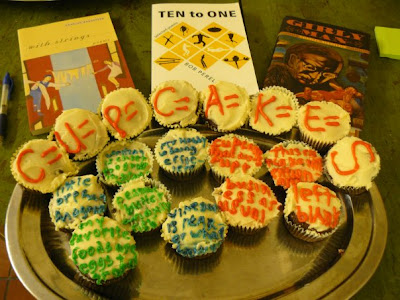














 "I teach horizontally, meaning that while I might begin with a fixed idea of what I'm going to teach that day, I let it drift rhizomatically way off topic, often pulling it back when it gets too far. I rely on non-fixed materials to teach this way; the whole world is at my fingertips. Should I go off on a tangent about John and Rauschenberg and their love relationship as expressed in Rauschenberg's bed, an image of that bed is always a click away. From there, we can head anywhere into the non-fixed universe, be it film, text or sound. And of course, that always takes us elsewhere. As Cage says, 'We are getting nowhere fast.'"
"I teach horizontally, meaning that while I might begin with a fixed idea of what I'm going to teach that day, I let it drift rhizomatically way off topic, often pulling it back when it gets too far. I rely on non-fixed materials to teach this way; the whole world is at my fingertips. Should I go off on a tangent about John and Rauschenberg and their love relationship as expressed in Rauschenberg's bed, an image of that bed is always a click away. From there, we can head anywhere into the non-fixed universe, be it film, text or sound. And of course, that always takes us elsewhere. As Cage says, 'We are getting nowhere fast.'" 

 that anyone has yet got the imaginative measure of that terrifying day six years ago. Certainly our Tolstoy has not crawled out of the rubble. The closest we have, Don DeLillo, succeeded as an essayist-journalist ("In the Ruins of the Future: Reflections on Terror and Loss in the Shadow of September,” Harper’s, December 2001) but, to my mind, failed as a novelist ("Falling Man"). One reason, perhaps, is that the remembered emotion was instantly buried under a pile of cultural junk.' - Tod Gitlin in his review of Susan Faludi's The Terror Dream (written for
that anyone has yet got the imaginative measure of that terrifying day six years ago. Certainly our Tolstoy has not crawled out of the rubble. The closest we have, Don DeLillo, succeeded as an essayist-journalist ("In the Ruins of the Future: Reflections on Terror and Loss in the Shadow of September,” Harper’s, December 2001) but, to my mind, failed as a novelist ("Falling Man"). One reason, perhaps, is that the remembered emotion was instantly buried under a pile of cultural junk.' - Tod Gitlin in his review of Susan Faludi's The Terror Dream (written for 


